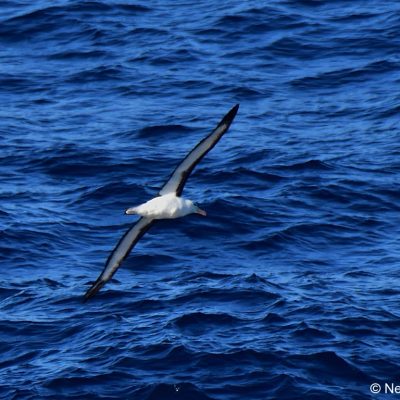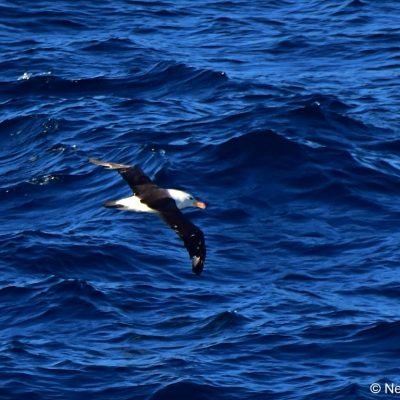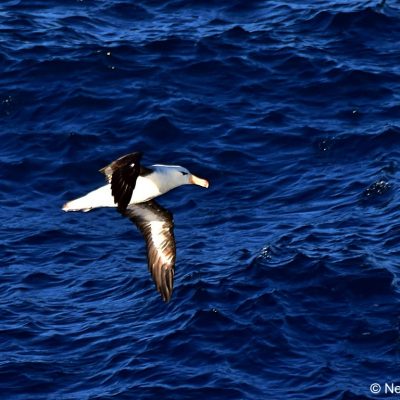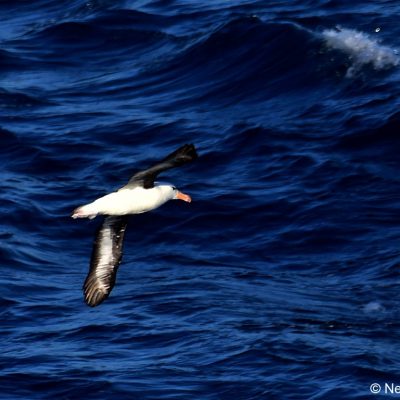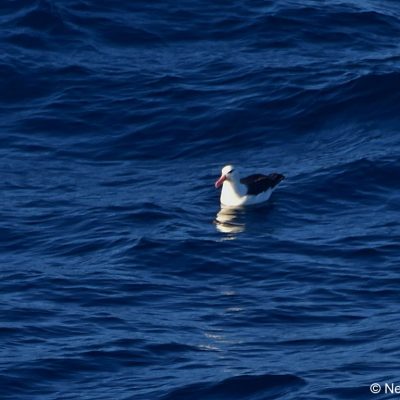They have nasal passages that attach to the upper bill called naricorns, although the nostrils on the albatross are on the sides of the bill. The bills of Procellariiformes are also unique in that they are split into between seven and nine horny plates. They produce a stomach oil made up of wax esters and triglycerides that is stored in the proventriculus. This is used against predators as well as being an energy-rich food source for chicks and also for the adults during their long flights.[4] The albatross also has a salt gland above the nasal passage which helps to remove salt from the ocean water that they imbibe. The gland excretes a high saline solution through the bird’s nose.
The black-browed albatross is circumpolar in the southern oceans, and it breeds on 12 islands throughout that range. In the Atlantic Ocean, it breeds on the Falklands, Islas Diego Ramírez, and South Georgia and the South Sandwich Islands. In the Pacific Ocean it breeds on Islas Ildefonso, Diego De Almagro, Islas Evangelistas, Campbell Island, Antipodes Islands, Snares Islands, and Macquarie Island. Finally in the Indian Ocean it breeds on the Crozet Islands, Kerguelen Islands, Heard Island, and McDonald Island.[13]
